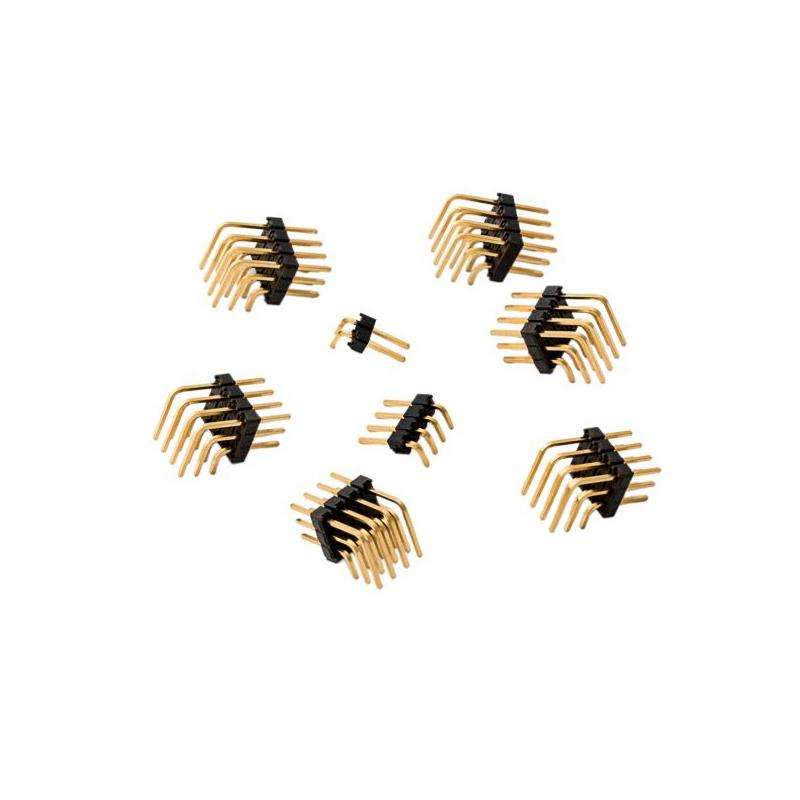
The RxMux is an 8 channel 2:1 R/C servo multiplexer. It uses one servo input channel to switch up to 8 servo channel outputs between two input sets. Signal sources such as R/C receivers, autopilots, microcontrollers, etc. are connected to Input A and Input B. Standard R/C servos are connected to the Output. Switching between the two sources is accomplished by sending the appropriate width servo signal on the Select input channel (Input A, Channel 8). When a servo signal less than 1.5ms wide is detected, signals connected to Input A are sent to the Output. A servo signal wider than 1.5ms will send connected signals at Input B to the Output. When no servo signal is detected at the Select input, the RxMux will default to connecting Input A to the Output.
The RxMux is best used as a component in a well-planned system (by itself, the RxMux does not perform any failsafe, redundancy or protection services), although the RxMux will default to Input A in the absence of any Select input signal, this is not a reliable failure mode.
Most R/C receivers will output some signal even when they are not receiving a valid transmission. The use of PCM receivers with appropriate failsafe programming is recommended. In most applications, an external device must provide the intelligence to determine which input should be selected and send that choice to the RxMux.
The RxMux is commonly used in a manual override system for an autonomous vehicle. A switch channel from an RC radio is connected to the Select input. This system is particularly useful in autonomous aircraft such as airplanes, helicopters, tricopters, quadcopters or other "drones". If something goes wrong with the autonomous control, the pilot can flip the select switch to engage manual control.

Add New Review